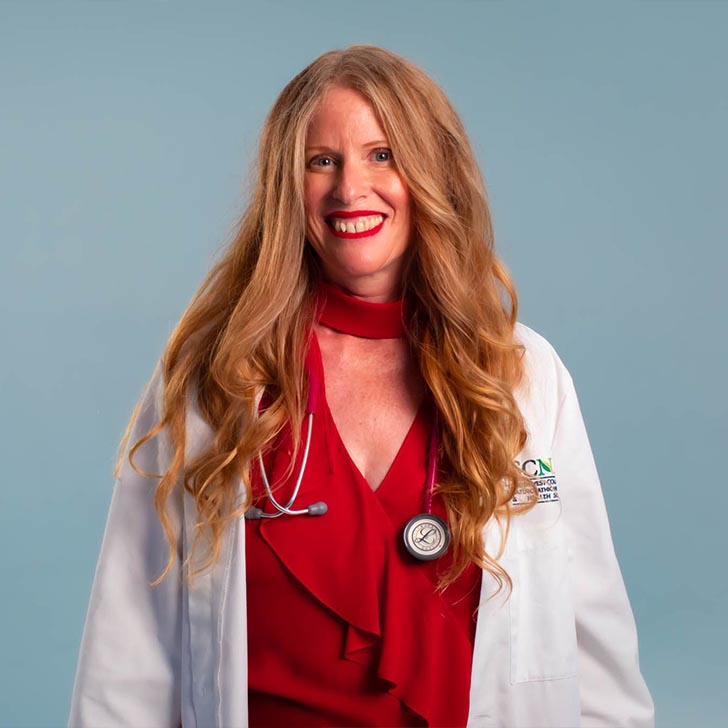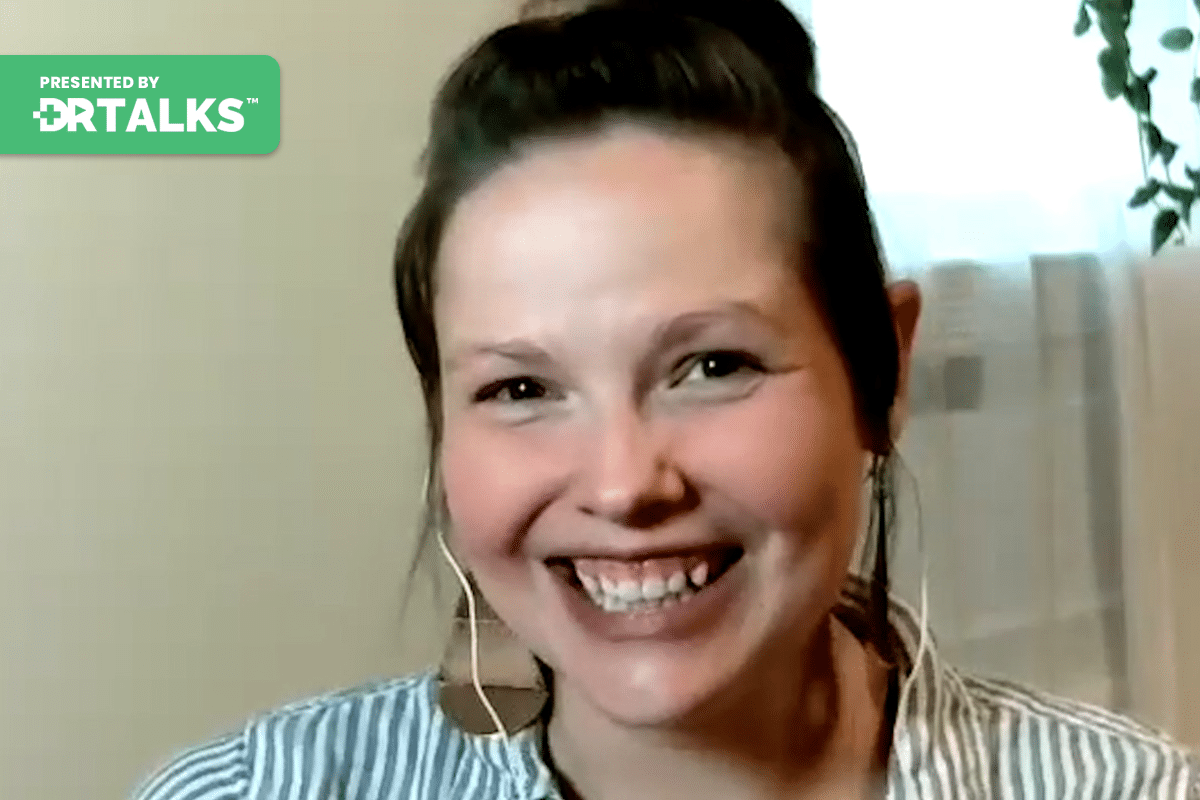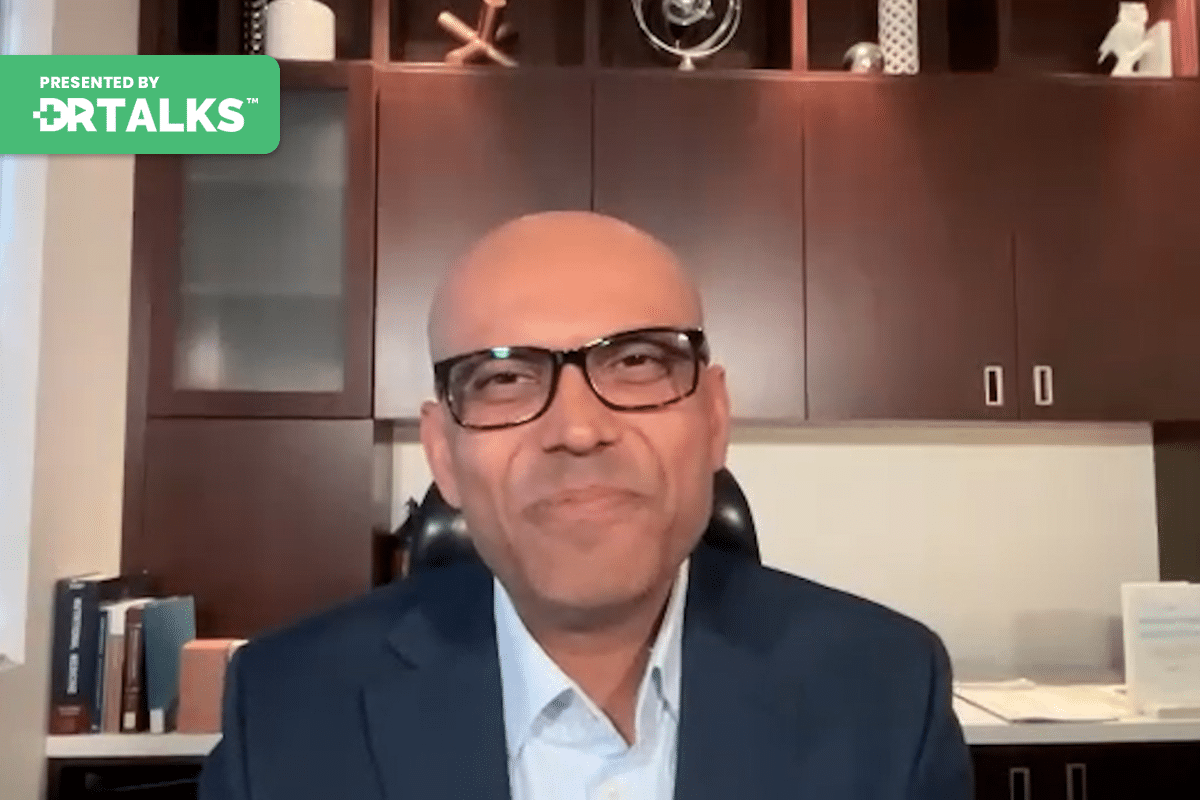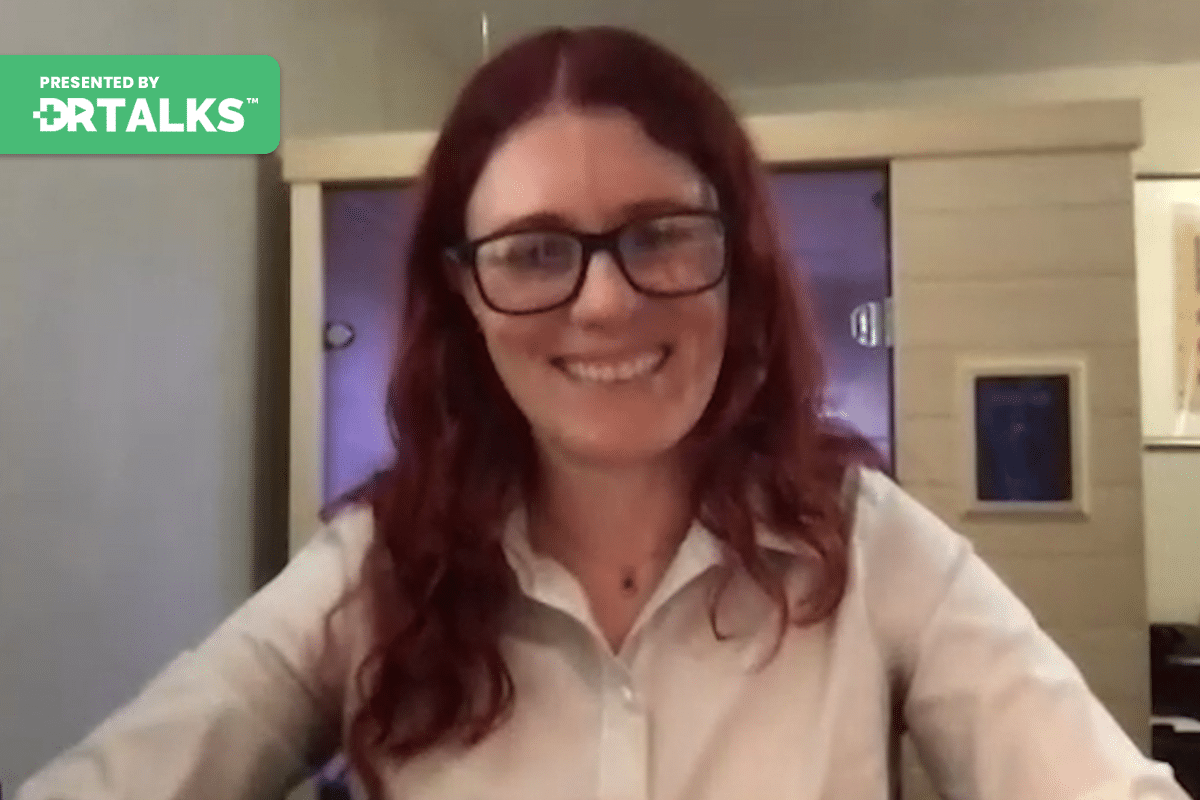Join the discussion below

Dr. Sharon Stills, a licensed Naturopathic Medical Doctor with over two decades of dedicated service in transforming women’s health has been a guiding light for perimenopausal and menopausal women, empowering them to reinvent, explore, and rediscover their vitality and zest for life. Her pioneering RED Hot Sexy Meno(pause) Program encapsulates... Read More

Lauren Tessier, ND, is a practicing Naturopathic Physician licensed by the state of Vermont. Her practice Life After Mold in Waterbury, Vermont is the East Coast’s only formerly certified, CIRS-literate Naturopathic practice. Life After Mold services patients suffering from multi-symptom, multi system illness, complicated by co-morbid conditions such as MCS,... Read More
- Discover the intersection of estrogen, histamine, and mold and how they impact your health
- Differentiate between interstitial cystitis and urinary complaints due to mold
- Understand the similarities between immune system changes in menopause and mold exposure
Sharon Stills, ND
Hi, ladies. Welcome back to Mastering the Menopause Transition Summit 2.0. I’m your host, Dr. Sharon Stills. We have another good one today. We’ve got a real expert with us. We were chatting before. We’re both naturopathic physicians. We’re both very passionate about women’s health and health in general. We even both have the same assistant who helps us. So this is our first meeting. But we’ve known each other. It’s funny because she’s so brilliant. Before, she was saying, If I go into too much minutia, let me know; I can reel it in. And I was like, No, bring it. Like this audience, you ladies are intelligent, and you need the minutia.
So the conversation we’re going to be having today is about: Is it mold, Is it menopause, or is it both? So grab your pens and your pencils. We have Dr. Lauren Tessier in the house with us. She’s a naturopathic physician, as I said, from Vermont. She’s got, I think, a pretty totally focused practice on mold and chronic infections. This is always a complicated topic. If you are someone who is suffering with this, we’re going to have a lot of good information for you today because I know it can be very frustrating and easy to lose hope about healing. So we’re here to bring hope for mold, healing, and menopause. And so welcome, Lauren, to the summit.
Lauren Tessier, ND
I am so excited to be here. Thank you so much for having me. I think it’s so important to have this discussion. I feel like mold and menopause, or at least menopause, is happening to about 50% of the population. Mold is happening in about 50% of buildings and about 85% of commercial buildings nationwide. So, yes, it’s a good thing that these two things are being read together here. So thank you so much for having me.
Sharon Stills, ND
Oh, you are welcome. Yes, those are shocking and saddening statistics, but they are true. It’s kind of like, when I first started practicing 22 years ago, I was like, Well, let’s see if you are toxic or if you have mold. And now it’s kind of like, Let’s see how bad it is and how your body is. It’s like it’s an epidemic, right? It’s something that affects us all. So how did you get into this area? Do you have a personal story? Or, like, what made you focus your practice in this area?
Lauren Tessier, ND
Sure. I mean, it’s a great question. So when I started out here in Waterbury, Vermont—of course, it’s in the name—there was a flood here about a year or two before I moved here. Some of my first cases were of folks who had really stubborn cases of fatigue and brain fog. As I dug deeper, lo and behold, they were working in a basement that had been remediated following these issues. Everything that you throw at it, like the BT, the B-12, the iron, the vitamin D—all the basic stuff just wasn’t sticking. So when that dialog started opening up, I started digging around to see who the heck knew anything about mold that I could learn from. And that really started me on my process of learning the Shoemaker protocol, kind of growing beyond the Shoemaker protocol, and then moving into doing my own investigation. I’m doing my own teaching and being involved in an educational nonprofit that teaches other doctors how to do this so we can deliver more care to people who need it. So there’s kind of that part of how I was introduced, but I’ve also experienced mold in my living spaces on two occasions in the past ten years.
That has been challenging. Then, when I look back at some really important people in my life and their health issues, there’s just no way mold wasn’t involved. And one of those instances was my dear uncle, who passed when I was a teenager, and he passed from Wegener’s granulomatosis, which is an autoimmune vasculitis that no one knows about; it took the hospital six weeks back when I was a teenager to diagnose it. One thing that just always rang true about that was that my mom and I often discussed that the space that he was living in was a moldy space. I’ve done a lot of digging on autoimmunity and mold since then, and that’s kind of the little thing that keeps me moving forward: if I can help someone and prevent a loss, and that loss really shook me, I definitely have that kind of heart center that really keeps me moving forward on the hard days and the difficult days. It’s kind of like, A yes to all personal family and initial introductions and to molding with my clients ten years ago.
Sharon Stills, ND
Thank you for sharing that. Yet, as you’re saying that, I’m thinking, Gosh, yes, like I can remember, it’s almost like as a child, we were like playing and seeing the mold and looking how it was fuzzy, and we didn’t even do anything about it. We have definitely come a long way in our awareness, because I don’t even remember. I mean, I went through medical school in the late 1990s. It wasn’t even part of our program or our differential diagnosis. It’s always been an issue, but there just wasn’t a lot of awareness. So let’s start with the basics, just so we’re all on the same playing field. What are molds? What are mycotoxins? Where are they found? What should the listeners know about, like go teach.
Lauren Tessier, ND
Yes, absolutely. So if people just wrap their heads around the concept that, like beer, beer is made by yeast, and yeast makes alcohol, right? That’s what gives beer its magic for people. When it comes to molds, yeast, and fungi, mycotoxins are what they produce. The molds or the yeast are the actual organisms. So in the world of mold, there’s an entire kingdom of fungi, and within that kingdom, we have yeasts and molds. Molds are multicellular, meaning they have a lot of little pieces that work together to make them a functional unit, whereas yeast just has one little cell, and that one little cell can go around the world and do its own thing. It doesn’t need anyone else to help it grow. Both of those types of fungi actually have the ability to produce mycotoxins. Mycotoxins: some people say micro, like small; it’s more myco, as in fungi. These mycotoxins aren’t made by all molds. Sometimes there can be one type of mold that sometimes makes it under certain conditions or doesn’t at all under other conditions. So it’s a little bit of a crapshoot to say that all molds make mycotoxins or that even one type of mold always makes mycotoxins. So mycotoxins are very small. They can come into our bodies through transdermal means, so on our skin. They can come in through inhalation, into our lungs. They could come in through our mouth and into our gut. There’s also this tricky little part where this might scare people. It surprised me when I first learned about it. They can climb up the olfactory bulb so that the nerve that controls smell in the brain drops down into the nose, and they can actually dissolve into
the nerve there and kind of crawl up into the bulb of the olfactory nerve into the brain. So there are quite a few different routes of entry for these mycotoxins in our bodies. And the hardest part about them is that they’re great at immune system suppression, so they’re really good at kind of invading and waiting to be targeted for removal. They also impact the detox system, which makes it very hard for them to be moved out of the body, and additionally, they are fat-soluble, so they dissolve into anything that has fat. Because of how they’re set up, they also cause oxidative damage to anything that has fat. The problem is that some of our most important organs in our body have tons of fat: our brain, our kidneys, and our liver. But every single cell has a coating of lipids on the outside, in the membrane. Every single cell has machinery inside it, like your mitochondria, which are made out of whole muscle lipids and fat. So because of all the different ways it can impact all the fatty substances in our body, it just hits pretty much every system of the body, and it can hit one person’s system in one way and another person’s system in another way.
The other thing I kind of want to get out of the way before we go any further is, Let me see if I have my jarring horror. Okay. So for this beautiful little picture, you don’t really need to see the words to get it. Each one of those circles is a type of mold illness. We have a kind of infection and colonization where the fungi are inside the body. We have allergies, which are also like histamine allergies—anything that causes that kind of allergic-ish picture. We also have the toxic reaction from the mycotoxins, and then we also have this inflammatory picture commonly known as SIRS. But it’s kind of evolving from there. So depending on the exposure and the person, we can have, any one of those four mold reactions may occur. And because they’re all overlapping, you can have someone who has an infection or colonization that’s in the body, but then that triggers the immune inflammation, or it secretes toxins and causes a toxic reaction, or it upsets the immune system and causes a histamine allergic reaction, so they can all kind of overlap and intertwine in a lot of funky ways. So that’s like the 10,000-foot view of the mold illness in a nutshell.
Sharon Stills, ND
And so come down to 9000 feet. So for the women watching, before we start going specifically to menopause, what is it like? What do they need to be looking for? Like, is their mold coming from their food in their houses, and if you can just give a little bit about what they should be asking their physicians for.
Lauren Tessier, ND
Sure. So what I will say is that the animal studies show that the highest bioavailability, like how well it’s brought into the body, is through inhalation. And again, animals, not humans. We can’t really study it, but we also have plenty of studies on food mycotoxins in humans. And so we do know that there are some that can get absorbed with food, but animals really show that inhalation is a huge component. And so, food is important to think about and consider. I always go for the environment first. That’s simply because our government allows a certain amount of mycotoxins in our food. And you better believe any company out there is going to reduce their microtoxin burden just below that level. So as far as I’m concerned, we’re pretty much having a standard amount of mycotoxins in diets that tend to be a little bit on the moldy side. So your dried grains, your fermented foods, your teas, your coffees, and your chocolate—all these things also happen to be kind of histaminergic too.
But food is something to put a pin on and consider. Usually folks who have come to me have already backed themselves into a food allergy corner where they can only eat two foods, and the mycotoxins certainly aren’t coming from the foods anymore, so the environment is really what I pay attention to. And I have people think about their home and think about any type of bubbling paint, warping walls, shading on the walls, buckling floors, powdery coatings on the leather, purses shoved in the back of the closet like wood, or brown, brown, or black caulking in the shower. So there are a lot of little visual signs. And if people head to my website, there’s a document there called Mold Prevention 101—it’s free to download, and it gives you a nice idea of where mold might be hanging around in the home. So I’ve had people think about that. But oftentimes, before people start with me, I ask them to bring in an IEP, an indoor environmental professional, to do a thorough test, an assessment of their home, because that’s usually where I find the biggest issue is.
Sharon Stills, ND
Hmm. And is that you are using the ERMI or what? How were you testing?
Lauren Tessier, ND
How much time do we have?
Sharon Stills, ND
So I should I want to hear it. So, yes.
Lauren Tessier, ND
Yes. So I should disclose that I am not an IEP. I am not a home doctor. I am a human doctor, right? So I can only share what my experiences have been personally and what my clients experiences have been. I no longer put weight behind the ERMI because there are two groups being compared: Group one and group two. If you have a really huge group one in a moderately big group two, you’re going to have an okay ERMI, even though the house is incredibly moldy. And so ERMIs are great because they do the PCR, they tell you what species are there, and maybe you can cross-reference them with a urine mycotoxins test and try to put the picture together. But the ERMI can be great for those species identification, but you always have to look at that spore equivalent count. You can’t just look at the raw score in the ERMI or any IEP worth its weight. A. Is going to possibly be willing to do an ERMI. They will be willing to not only do an air sample but maybe even do an in-wall sample. You wouldn’t believe how often I see mold hidden in the walls, and IEPs are going to say, Nope. I’m not going to damage your property. I’m not going to drill a hole in the wall. It’s like you’re missing it. You’re absolutely missing it. So there are a lot of things to consider when looking for a good IEP. And testing is going to look very different from house to house. I think an ERMI is a really good place to start, and I’m not necessarily a fan of the plates that people put out to kind of grow and ship off. They might be a nice kind of intro level for people to experience, but I always push people to go past that for testing. So there is an organization, a nonprofit called ISEAI, so that’s I S E A I dot org. and there’s a get help page there, and you can actually find IEPs who are literate and aware of mold illness, who work with doctors like myself, and who really know how to give a good, solid rundown on a house test. And so I encourage people to always try to find an IEP through that interface.
Sharon Stills, ND
Give the website again slower.
Lauren Tessier, ND
Sure. Absolutely. It’s iseai.org, and that’s also the nonprofit that I’ve been helping in on the executive board with since 2017.
Sharon Stills, ND
So people who are listening, the ladies listening can go to that website, find someone in their area, and that’s who they should be using to get their home tested.
Lauren Tessier, ND
Absolutely. And some of those IEPs, if you don’t have one close to you sometimes they do virtual assessments with you or they will work with your local IEP to make sure that they’re kind of being thorough enough so there’s always ways that people can be supported even at a distance.
Sharon Stills, ND
Okay. And then about I’m like, we’ve got an expert in the house. I’m going to drill her with questions. I talk about menopause, but testing. So for can you just talk a little bit about for the listeners like what kind of testing, what labs, what should they be asking for? Because I know there’s a wide variety.
Lauren Tessier, ND
Yes. And the question is, What are you looking for? So those four overlapping circles—do you have a gut reaction that maybe you’re looking more at inflammation? Do you have a gut reaction that maybe there’s an infection? Do you have a gut reaction that maybe it’s a toxic reaction? So if you think it’s a toxic reaction, which I usually perceive as more kind of neurological and hormonal, typically brain fog is going to be the biggest sign for the toxicant. And this is just my clinical opinion. It’s what I’ve seen. I will usually have people do a urine mycotoxins test, and this is non-diagnostic; it is a screening tool, and usually if it’s positive, then I work on that with folks. I do mean into real-time labs for that. I don’t know if I can say that, okay.
Sharon Stills, ND
You said it like the Fed itself.
Lauren Tessier, ND
I specifically use that company because I’ve also found clinically that it fits my practice and my improvement in correlation with my client’s symptoms. Symptoms also seem to correlate with improvements in their urine. So I would do that for a toxin check. However, if I think someone is having an allergic reaction or a histamine allergic reaction, I’m going to do pretty much every associated histaminergic test I could do, including your ECP, your IgE, and the whole mass cell panels if people are inclined to do so because those are a pain in the buttocks. And then, often times, if we have the ability, we might run IgE for common indoor molds just because they might not be reactive to them. But it’s still something to kind of put the allergic picture together. If we think it’s going to be more of an infective picture, I’m going to run more of the antibodies for IgM, which is kind of the acute get out there and fight antibodies, or the IgG, which is kind of the long-term we’ve potentially been previously exposed to, and different labs are going to have different ones for that. Quest might have a different panel for that than LabCorp. So sometimes we’ll do the antibodies, and sometimes we’ll do direct antigen measuring, where we’ll look for the tiny little carbohydrates of the fungi floating around in the body. Those are really cool, and they can be really helpful when someone has a deep-seated, hidden infection. And so the one fair warning there is that every type of lab has a disclaimer, right? And nothing’s perfect. If your immune system is suppressed enough from mold exposure, which happens, you might not mount enough of an IgM or IgG response to have that test slide up like that.
And then finally, for the inflammation piece, the surface piece, a lot of that is kind of the shoemaker’s list of labs, and it’s all alphabet soup there. It’s mmp-9 beta and vegf-tgf beta. Out of all of those, the one that I really find the most helpful is the TGF beta, and I usually combine it with a cytokine panel and also with a lymphocyte panel that breaks out all the different subsets: the T1s, the T2s, the Tregs, the cytokines, others that are cytotoxic, all that kind of stuff. So it’s really dependent on the person who’s sitting in front of you. If someone’s coming in and they’re kind of puffy, itchy eyes, runny nose, and they have some anxiety, I start thinking, Oh, histamine, versus if someone comes in and they’re fatigued and their mitochondria just look taxed as all get out and their hormones are off and they can’t function. I start to think more about the toxic picture. If it’s immune system dysfunction, I start to think a little bit of SIRS, although honestly, I’ve moved away a bit from stories over the years, and of course, the infection I kind of lump in with the colonization. There aren’t too many people that I’ve actually seen who have a deep-seated fungal infection. Oftentimes, it’s just kind of trying to clear out and address the fungi that naturally exist in all our biofilms.
Sharon Stills, ND
Fantastic. Okay, so now let’s talk about, like, mold and menopause. Now that we’ve got a good intro, how does mold exacerbate menopause or vice versa? Like what? What do you see as the connecting link there?
Lauren Tessier, ND
Yes. So I think maybe we should start. I think immune system dysfunction is probably the easiest, most straightforward, and most telling. I’m sure a lot of other women out there are aware that your sex hormones play an integral part in your immune system’s functionality. And there are a lot of aspects of your immune system that are really estrogen-responsive. And so when women are going into perimenopause or menopause, they’ll start getting spikes in their pro-inflammatory signaling. We call these pro-inflammatory cytokines. They’re going to be like your TNF-a and your IL-6, and kind of from that aspect, when you’re putting out a lot of pro-inflammatory signals, it’s like increasing the background noise in the body. When that happens, the body has a greatly decreased ability to respond to pathogens, foreign invaders, or any other immune system stimuli. So as a result, we also see with menopause and perimenopause that certain subtypes of our white cells, the things that really carry the immune system in the body, start to decrease in activity. CD4 cells are one of those, and even your B lymphocytes are responsible for making those antibodies, and even your cytotoxic cells, which go around and survey the immune system and kill that cell with a virus or kill that cancer-starting cell over there.
So we just see that in menopause, like that’s just menopause straight out for women. Now, if we add mold on top of that, we have seen that with mold exposure. And I’m going to kind of speak a little loosely here. More specifically, Mycotoxins exposure is what I’m referencing here. When we see people who are exposed to Mycotoxins, we are seeing another upregulation in pro-inflammatory cytokines (IL-6 and IL-17) that’s overlapping a lot with the menopause and perimenopause symptoms. We also see a downregulation in our protective anti-inflammatory cytokines, a downregulation of IL-4 and IL-10. And then we also see a drop in either the count or the functionality of some of our white blood cells. So we see a drop in our T regulatory cells, the cells that go in and make sure everyone’s doing their job. And also even a drop in all of our white counts, a drop in our macrophages, who go in and kind of gobble up and clean things up, and even a drop in those cells ability to go in and phagocytes, which just kind of go in and pull things in and digest them inside of themselves. So we’re seeing that if we overlap those, it’s a bit of a perfect storm. Now, it’s not that every single woman going through menopause who has been exposed to mold is suddenly going to have an immune system; it’s more like it’s kind of giving people a heads up that these two things very much overlap. And in some instances, by having them both come on at the same time, you are having a wider deficit in the immune system’s functioning.
Sharon Stills, ND
Absolutely. So what do you recommend as far as like strengthening the immune system?
Lauren Tessier, ND
Mm hmm.
Sharon Stills, ND
Like someone do about this?
Lauren Tessier, ND
Get out of the mold. If you think that there’s water damage in the home or if you’re smelling musty enough, get the home assessed, and if there’s an issue, get it adjusted. And that’s no small feat. That is the hardest part of addressing mold exposure. The body has an innate, a beautiful way of healing itself. Some systems need some help, even after they get out of mold. But whenever I talk to people, I always say, Go and address your home first, and you might not need me in four months. And if you don’t, I’m sorry. I’ll miss you. It would have been nice working with you, but I’m also saving you money and time. So I. Yes, it’s a hard thing to navigate with kind of orienting what to do for the immune system. So obviously, getting out of the exposure after that is when I start digging into those inflammatory cytokines and those specific immune system subsets to see which ones are out of whack. And if they’re out of whack, then I’ll consider supporting them. So if your NK cells are low or underactive, then try turkey tails or the great option of turkey tail mushrooms. Surprise. All right. And there are just so many different things depending on the cell subtype. I don’t typically do anything across the board like Echinacea or this for general immune system functioning, astragalus, or ashwagandha. I really try to hone it into this cell subtype. The hard part about doing that is that when you get one of these tests that says your NK cells are low and your TH1 are high, you don’t know if that’s a chicken or an egg. You don’t know if that is a safety defense because the body is challenged. And so if you give it that support, what happens then? Do you make the body worse? So I always really lean into kind of getting the home clear and kind of shaking loose what’s there. And if we have a pattern where after someone gets out of exposure, we’re working on detoxing them and clearing out those mycotoxins, and things are starting to look kind of even kill, that’s one for which I’ll do more of the immune system subset identification because you’re kind of weeding out the chicken or the egg question. They’re like, What’s left after the dust settles? Is it really a good time to take those types of tests?
Sharon Stills, ND
Exactly. I’m pretty sure we use the same lab for those testing. And yes, it is sometimes it’s just like knowledge and okay, this is what how your immune system is reacting. And sometimes it’s like, okay, well, all of this is off because this is off and we have to just handle it. So it is good. I really appreciate that. I love that you do that to go in and really specifically modulate the immune system rather than just saying, take echinacea.
Lauren Tessier, ND
And I want to say something here, too, if you don’t mind. I think a lot of people get really excited about wanting to see what the pathology is on their test. They want to see what’s wrong and they want to be validated and they want to be vindicated. And that’s fine, especially when you’re facing family members and friends who don’t believe you or you need to prove something to someone to get something moving, to get your home remediated. Totally fine. But if you’re not in that position, I always ask people to take a step back and kind of again wait for the dust to settle. Because otherwise and this is a horrible metaphor, I’m going to gross everyone out. But if you have a sinus infection and you blow your nose and you look at the tissue, you’re going to see signs of a sinus infection. But that’s not really going to change the outcome because you already know that there’s an issue there. what I mean? So just wait until the dust settles after you’ve done some of the home stuff. And then I think it’s reasonable to come on and get more specific with your interventions.
Sharon Stills, ND
Yes, see, I mean, you bring up such a good point that it really is about remediating the home and it’s easy to say, just go remediate your home. But it is we want to acknowledge that that is a huge undertaking. And I have patients who have to leave and move out. And it can be very disruptive. And what about like the workplace or some place?
Lauren Tessier, ND
I’ve written way too many letters for employers that have the word per OSHA or OSHA guidelines. Your working conditions have to set forth a safe space in which to work. The problem is, according to OSHA and the EPA, if there is mold growing on a wall, you just throw bleach on it and you’re done. And please don’t do that, especially not on a porous wall, and especially if you’re chemically sensitive, which most people are. Navigating work, it was great during the pandemic, and I’m so sorry to say that because people got to work from home, and they either got to get out of their moldy workplace or they got to go home and be like, Well, I’m sicker here because I’m home all the time, and maybe my home’s the issue. So, being at work, it’s a really hard thing to navigate because H.R. is not there for you. H.R. is there for the legal protections of the business itself, like just being completely frank. And so there are letters that can be written, but ultimately the employer is going to test the way they want. And oftentimes, they’ll choose someone to come in and test. And it will be one air test in the middle of the room, 600 feet away from where there’s any issue. And they get the all-clear in those instances.
I think it’s really important for people to pay attention to their breathing and document it. And the reason why is that as soon as you start having breathing issues in a place that is integral to life, headaches, migraines, and fatigue are not integral to life; they’re subjective. As soon as you start having breathing issues and you document the heck out of that, their employer has to do something because you are interfering with something that is necessary and needed for life. And so employers don’t usually mess around with breathing issues. Another thing that I want to call out in the employer discussion is that, I think it was 2017 or 2018, the ADA recognized multiple chemical sensitivities as being protected under the ADA. And so multiple chemicals sensitivity can look a lot different. But there is a breathing component that was involved in that legal court case. And so I want people to report honestly when they work with me. But if there’s any chest tightness, shortness of breath, a feeling of pressure in their lungs, or something else, I document the heck out of it because that might be our only foot in the door. It’s working with employers.
Some employers are finding that some are amazing, and it’s incredible. And other ones—I mean, the horror stories I’ve heard, been witness to, and fought with—I think probably the scariest ones are the schools. You have teachers that make up 5% of my patient population, mostly women. And I think the percentage of the US population of teachers is somewhere in there, like a 10th of a percent nationwide. But yet, my patient population is 5%. Think about it. Think about that, right? And then for each teacher, you have anywhere from 20 to 40 kids, and then you also have staff and faculty all throughout that building. So one canary in a coal mine is really speaking to potentially hundreds, or even maybe thousands if you’re one of the larger high schools in the country. And the schools are the hardest ones. I’ve never seen a school jump through the required hoops to support a healthy environment—a school that’s been called into question—maybe one or two small private schools, not public schools. And that is so gut-wrenching and heart-wrenching to say. What I usually see instead is that teachers don’t want to put up the fight after giving a really good initial fight, and they either end up resigning because they don’t want their help on the line, or five years later I get a disability determination request coming into my office. And it’s heartbreaking. If there’s one thing I wish I could change, it would be the school issue. I’m sorry to kind of step back and give a big PSA, but if some employers are really, really hard to navigate when it comes to that, it’s very, very hard because they also know the liability there. They know that there is business insurance involved and health insurance involved; it’s a big battle for sure.
Sharon Stills, ND
So we empathize with all of you who are suffering and not an easy struggle, but one worth embarking on if it’s your health.
Lauren Tessier, ND
That’s absolutely.
Sharon Stills, ND
So. I’m going to kind of jump gears because I just want to say that when I asked to interview you, you had like all these different topics, and I was like, Let’s try and talk about them, all right? Let’s just totally jump gears to, like, interstitial cystitis and the blast and just your views on that, because as women go through menopause and through the transition, their hormonal journey, urinary tract infections, and bladder issues definitely become more prevalent.
Lauren Tessier, ND
From the menopause perspective, when we think of urinary issues, like you said, we have to start thinking about the integrity of the mucous membrane of the bladder and the urethra. And so oftentimes, right, it’s estriol locally, vaginally, that can like change those recurrent UTIs. Even I’ll throw my hat in the ring on this: as women age and advance, our pelvic floor weakens, and after giving birth, our pelvic floor starts to get weaker. And then, over time, we also have potentially urge incontinence, just with increased frequency because we’re afraid of losing our bladder. So there are a lot of bladder issues that come with menopause. However, from a multiperspective perspective, there are also a couple of urinary issues that pop up. One of the most common ones that I see is this fluid imbalance. And this is because there’s an impact on the antidiuretic hormone in relation to how much salt is in your blood. And so what we’ll see is that people will drink and drink and drink and drink, and they’ll pee and pee and pee and pee, and they’ll have a lot of trouble holding on to the fluid. That’s often how you’ll hear people report it. And sometimes adding electrolytes helps a bit. But oftentimes there is that microtoxin impact on the hormone system that regulates the fluid in the body. The other way that we see a fluid imbalance leading to, well, not a fluid imbalance
The other way that we see urinary issues pop up with mycotoxins is through local bladder irritation. Your mycotoxins go through phase one detox, phase two detox, and eventually their urinary metabolites are peed out. But these urinary metabolites aren’t perfect. They’re not completely neutralized or completely safe. They can still cause some oxidative damage, even in their water-soluble form. So they go through the kidneys and hit the bladder. And just like leaky gut that can happen in the gut, you’re essentially getting a leaky bladder, and you’re really upsetting that mucous membrane. The other thing that can happen when you get those mega-toxin derivatives in the bladder is that the natural biome, the natural biofilms that we have in our bladder, are being thrown off because mycotoxins are also antimicrobial. So by shifting your natural flora in your bladder, you’re potentially damaging the mucosal lining. And that’s just natural, like detoxing these things out of your body. And so when you really start to irritate that bladder lining, you’re obviously going to have an increase in urination for women and men, too. But how I usually see this manifest is in the nervous bladder before bed. I don’t know why it’s always been prevented, but it always seems like women will get up to pee three or four times before hitting the lights and going to bed, and maybe one hour into sleep they’ll get up and urinate again. So there’s something about this, like an antsy, nervous bladder, that happens to mold clients right before going to bed. And I can almost hear, people yelling at their screens right now. Because that’s me!
Sharon Stills, ND
Awesome. So as you can see, there’s a lot of overlap, but also lot of solutions. So to wrap up, I guess what would if you could just kind of talked about a lot of things. So if you can just maybe map out or highlight like what would you like the ladies?
Lauren Tessier, ND
Yes, I would like the ladies to do something that we didn’t quite get to hit on. Is it that your estrogen and histamine have a really peculiar dance? The biggest takeaway is that when you have big estrogen spikes, you can also have a bigger histamine response, and you would think, Well, menopause, my estrogens are dropping. Well, if you’re going in and out of perimenopause, you’re getting big spikes compared to very low drops. And with that can come really big histamine waves. So I just want to throw that out there for folks. So if you find yourself in a position where you’re having fatigue, headaches, body pain, or night sweats, yes. Mood issues—I think I said joint pain, sleep difficulties, memory, all that kind of stuff. Don’t immediately jump to; it’s just menopause. A nice little way to kind of see if there’s a difference. There is. If you give estrogen to the body or replace some of the hormones there and you see a little bit of improvement, maybe it’s the menopause component.
However, if you are also someone who is giving hormones and giving hormones and giving hormones and nothing is changing, then those symptoms might very well be due to mycotoxins. We typically see that when people have microtoxin issues, we do not replace hormones in them until we can kind of get them all balanced out, because it’s almost like this Schrodinger’s box. The input that you give is not the expected output that you get. So you would expect that if I’m going through menopause or perimenopause and replacing my hormones, I should be getting these benefits. If you’re going through what I think is menopause because of those symptoms and you’re getting progesterone and estrogen, they’re well balanced, and the doses are going up and up and up and up and up and up and up. And you’re not getting any benefit. It’s time to really start thinking about mold as a potential exposure for you.
Sharon Stills, ND
Mm. Yes, I will. I will caveat that. Absolutely. I can’t tell you how many patients I see come in, and like Dr. Lauren said, you want to make sure you’re on the right hormones. First of all, you’re not on the wrong ones—the wrong balance, the wrong dosing, the wrong administration, and so forth. But those come in, and they’re just kind of left like, Well, you’re on hormones. Too bad you’re still suffering for nothing. It’s just infuriating to me. That’s why you have to look at the whole picture. I love hormones. I’m a bioidentical hormone expert, but those hormones have to go into an actual body. And the terrain of that body has to be balanced. It is not an either-or. It’s both. And so.
Lauren Tessier, ND
Yes . And that’s after you address mold and after you really work on the root cause. I really find that all of the normal stuff starts sticking to all of the normal naturopathic and functional medicine interventions. I tell people that it’s like the cherry on top. After you clean up the system, the things that should actually be working will start working. But you really just have to bring it down to brass tacks, clear everything out, and give it time to rebalance, and then the rebuilding starts to stick.
Sharon Stills, ND
Yes, absolutely. That is wise, wise advice. So where can the listeners learn more about you?
Lauren Tessier, ND
Sure. So everyone can find me over at lifeaftermold.com I am on pretty much every social media channel as Life After Mold, and I am mostly active on Instagram. I also have some YouTube videos that are quite helpful for people, including how to find a good IEP, mold impact on the brain, and quite a few other things. So definitely check that out. And then, if you head over to my website, you can sign up for my newsletter and get the free mold prevention 1-to-1 booklet that I mentioned earlier. That’ll give you a nice map of the hotspots in your home to look out for. And I believe that for this particular event, I will be offering my Mycotoxins cheat sheet, and my good toxin cheat sheet tells you kind of what strains of specific molds make these mycotoxins. And so that way, if you do ever get a urine mycotoxin test, you can sit down and compare it to that cheat sheet and kind of get an idea of the sources of the mycotoxins that you are experiencing. So I think that’s everything.
Sharon Stills, ND
Awesome. Well, Thank you. Thank you for being here. I wanted to really bring in this aspect because while we’re here at menopause, while we’re transitioning, all about the pause. And part of that pause is really evaluating your health on every level. It’s a good kind of pitstop as we step into our sacred second act and keep rocking our worlds. And mold has just become such an important topic and an important piece of the puzzle for so many who are suffering.
So thank you for being here. Thank you for all that you do and for coming and spending some time and educating the audience here today. And thanks, everyone, for listening. And if this is the first time you’re hearing about it, you might be like, so take a deep breath. It’s going to be okay. Go back and listen to this. Go to some of the resources and if you are someone who’s been on a journey or think you have mold or haven’t found the right help yet, well, now you have an absolutely amazing resource. So we’re back with another interview. Thanks for being here.
Lauren Tessier, ND
Thank you so much for having me.
Downloads










